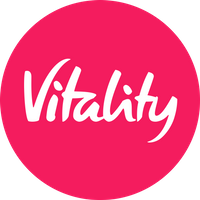Measuring ROI: making the case for employee wellbeing
The worry is that these lessons will become lost as restrictions are lifted and the pressures of businesses increase to full pelt.

The employer case for investing in wellbeing – a long-term approach
It’s those organisations that realise that wellbeing should be embraced as a full-time strategy, with a purpose, a framework, communicated in a tailored way and led from the top, that will reap the rewards in terms of usage, value and a culture that engages and excites. That, in turn – and over time – translates into happier, more productive employees, ergo organisational prosperity and sustainability.
Overcoming challenges and communicating wellbeing value
While intent certainly seems to be there, measuring return on investment (ROI) is easier said than done. Despite the fact that only 9% of employers currently measure the ROI from their health and wellbeing programme, 59% plan to do so in the next 12–18 months, according to Aon’s Benefits and Trends Survey 2021. However, measuring ROI shouldn’t even be considered before taking a forensic look at your current wellbeing programme.
Why? Because in most organisations, wellbeing is characterised by a set of disjointed benefits, services, apps and ‘initiatives’; each communicated separately, in a broadcast, one-size-fits-all way.
At the same time, the larger the organisation, the more siloed the people departments. Think HR, reward & benefits, learning & development, health & safety, occupational health. So, important data – such as risk assessment outcomes – isn’t necessarily being shared in a way that allows organisations to make best use of existing benefits and services.
What’s more, employee views are rarely sought in a way that translates into programme design and communication changes.
Implementing schemes and achieving engagement
But with no playbook for any of this, where on earth should employers start?
Ask first, what is the purpose of the benefit and wellbeing strategy and assess whether it is currently being fulfilled. Is it aligned with company values? Does it meet employee needs? Is it communicated in a way that connects with all the different audiences in a diverse workforce? And is it being assessed against the things that matter to business?
All too often, health and wellbeing initiatives, contracts or products are just assessed on price and a narrow range of minimum criteria, rather than performance against a measurable objective linked to business outcomes.
The upshot? Only 27% of UK employees feel their employer cares about their overall wellbeing, according to Gallup in its June 2020 article Why UK leaders need to build trust with their employees.
Let’s consider some of the key components of a purpose-led wellbeing strategy:
1. Stakeholder advocates
Wellbeing must be lived and breathed amongst leaders and line managers in order to be truly felt, believed and trusted by an organisation’s people.
Who talks about wellbeing, how frequently and on what stage, can all signal to employees its importance to leadership and the organisation. The CEO emphasising wellbeing regularly through business updates, then reinforcing this through line managers and digital communications can send a powerful message. For an even better chance of success, ensure clear lines of accountability and get employee advocates involved.
2. Insight
Tailoring wellbeing strategy to people and business needs is paramount; in terms of programme design and also communication. And you cannot possibly hope to meet people needs if you haven’t taken the trouble to get to know them; where they like to hang out (to help determine the right communication channels) and what interests them (to get the design and messaging right).
3. Strategy
With the insight in place, it’s now possible to create a strategy for what wellbeing means to the organisation and create objectives. This should be specific and measurable, allowing you to gauge your success and refine your efforts. This targeted approach can assist in creating a stronger business case and in maximising impact and return on investment.
4. Measuring health and wellbeing
Also use insights to assess the impact of your programme over time, and to learn when to change priorities. Combined with business outcome data such as absence, recruitment and retention statistics, you can make informed decisions about tweaks to programme design and communication to help better meet people and business needs.
5. Value on Investment
While ROI refers to the end financial value produced by an organisation’s investment – such as reduce absence cost or medical claims – organisations can also consider value on investment (VOI). This is not immediately visible in the form a financial gain, but can show improved productivity, engagement, job satisfaction and retention – all of which provide a great deal of value to businesses.
We can help here, with our recently launched ROI reports; a free, comprehensive and personalised report in five minutes by using our ROI calculator and completing just four questions about your business.
Wellbeing has come a long way from fruit bowls and bean bags. So, write your own playbook by working with insurers and intermediaries to put the pointers supplied here into action and secure that buy-in at board level. Your people and your business will thank you.
The author is Pippa Andrews, director of corporate business at Vitality.
This article is in association with Vitality and originally appeared on Vitality Adviser Insights Hub.
Supplied by REBA Associate Member, Vitality
At Vitality, we take a unique approach to insurance. As well as providing high-quality comprehensive cover, we provide a complete wellness package that can help boost employee engagement and productivity.







